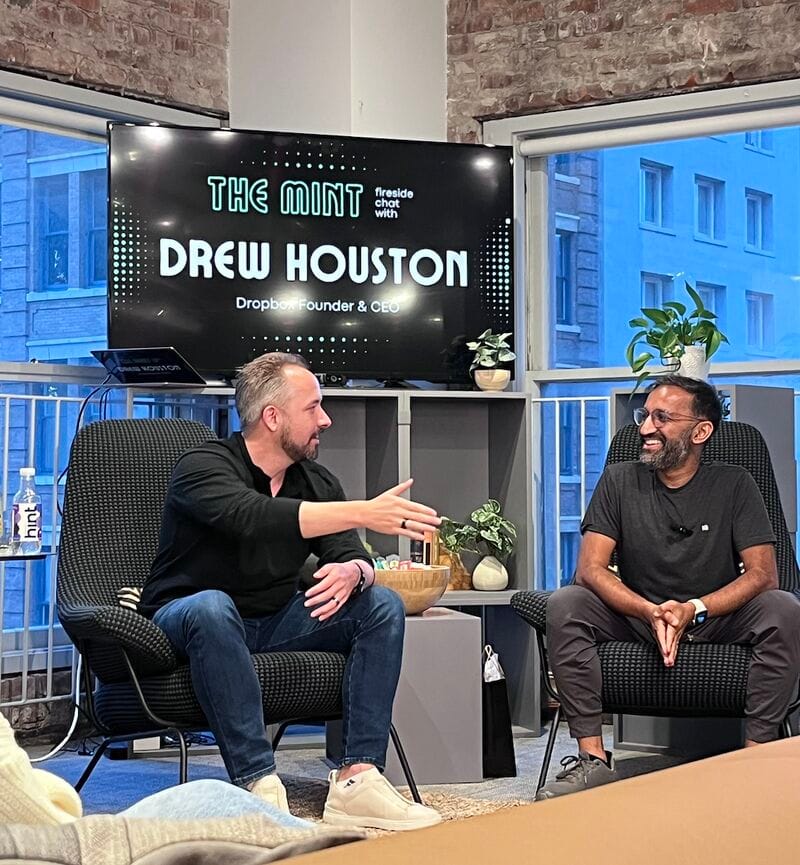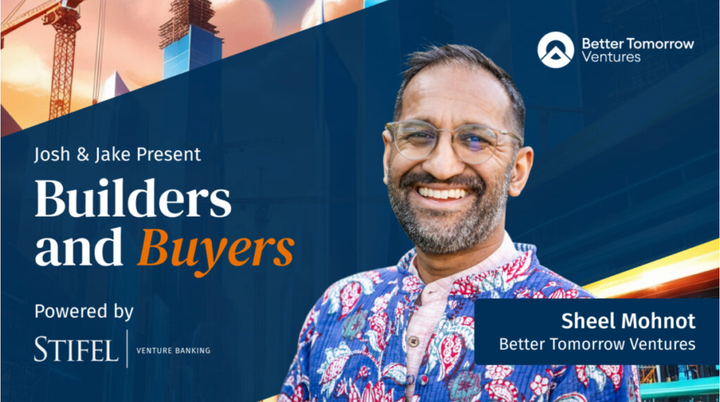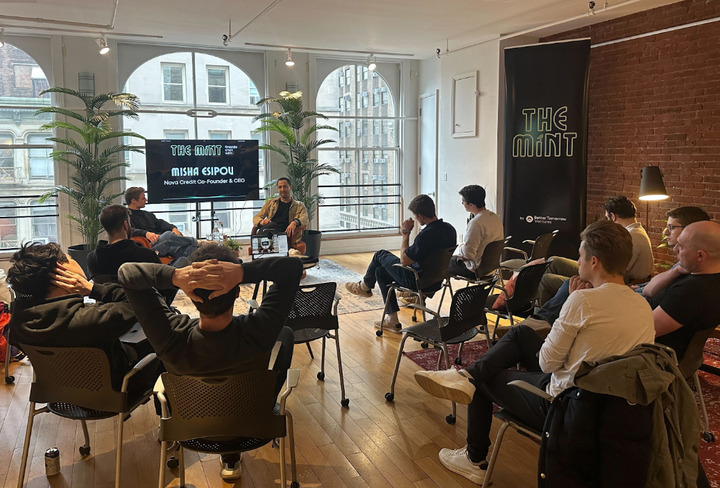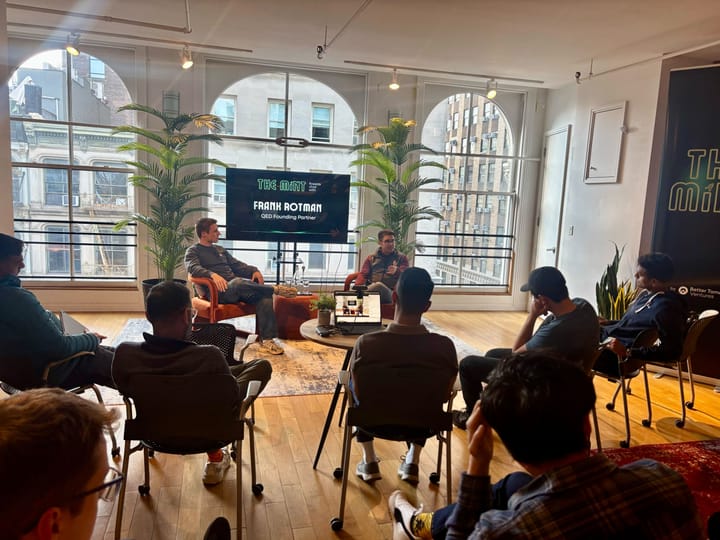The Mint Recap: Fireside Chat with Drew Houston of Dropbox

We had Drew Houston, CEO and Co-Founder of Dropbox, at The Mint last week to talk to our founders. Drew shared inspiring reflections on the early days of starting a company and how things have changed in the ensuing 16 years (!). Check them out.
1. Successfully acquiring early users in the early days requires constant experimentation.
Throw a bunch of stuff at the wall and see what sticks. Dropbox tried “the standard things” and didn’t find much success.
After observing examples of what other companies did (e.g., Amazon affiliate links and misremembering* PayPal’s referral program 😆), the Dropbox team cracked it after trying a dual-sided referral program: if one user referred another, they BOTH got free storage.
2. Actively observe how customers use your product and listen to their feedback to drive improvements.
By watching users interact with the product and addressing their pain points, you can refine your offering and provide a better user experience.
In the early days, Dropbox saw wide-ranging customer feedback (some very good, some very bad) and launched an exercise to understand the variance in UX. Instead of doing traditional user testing, they found a bunch of people on Craigslist and paid them to come into the office, so they could watch them live as they sat down and used the product.
For Dropbox, most of these test users didn’t even get 10% of the way there! Drew and his team videotaped the sessions and cataloged everything that went wrong in the process so they could fix it. This took their onboarding activation rate from ~25% to ~65%.
3. When you build something that catches lightning in a bottle, you put a target on your back.
The reward for getting into the bigger leagues is tougher opponents — only the paranoid survive.
A key strategy here: In a highly competitive landscape, deeply understand and focus on your unique value proposition. Don’t diversify into areas where you can’t win; put your eggs into the basket where you can improve an existing durable advantage.
Despite launching products that were universally loved by users in Carousel and Mailbox, Dropbox made the decision to wind down those products. It required immense maturity and focus to realize their durable advantage wasn't competing in consumer tech products, especially given the competitive landscape. Instead, they focused on doubling down on what they did best. As Drew said, “building a product is not the same as building a business — which is not the same as building a durable business!”
4. Transitioning from a founder to a CEO involves self-education and personal growth.
As the founder's role expands, continuous learning, self-awareness, and adaptability are crucial for managing company growth effectively.
Drew shared that “it’s important to recognize that a big part of the job is keeping your personal growth curve outside of the company growth curve. Nobody will train you. You have to educate yourself, and you have to figure out how to do that in a way that makes sense for you.”



